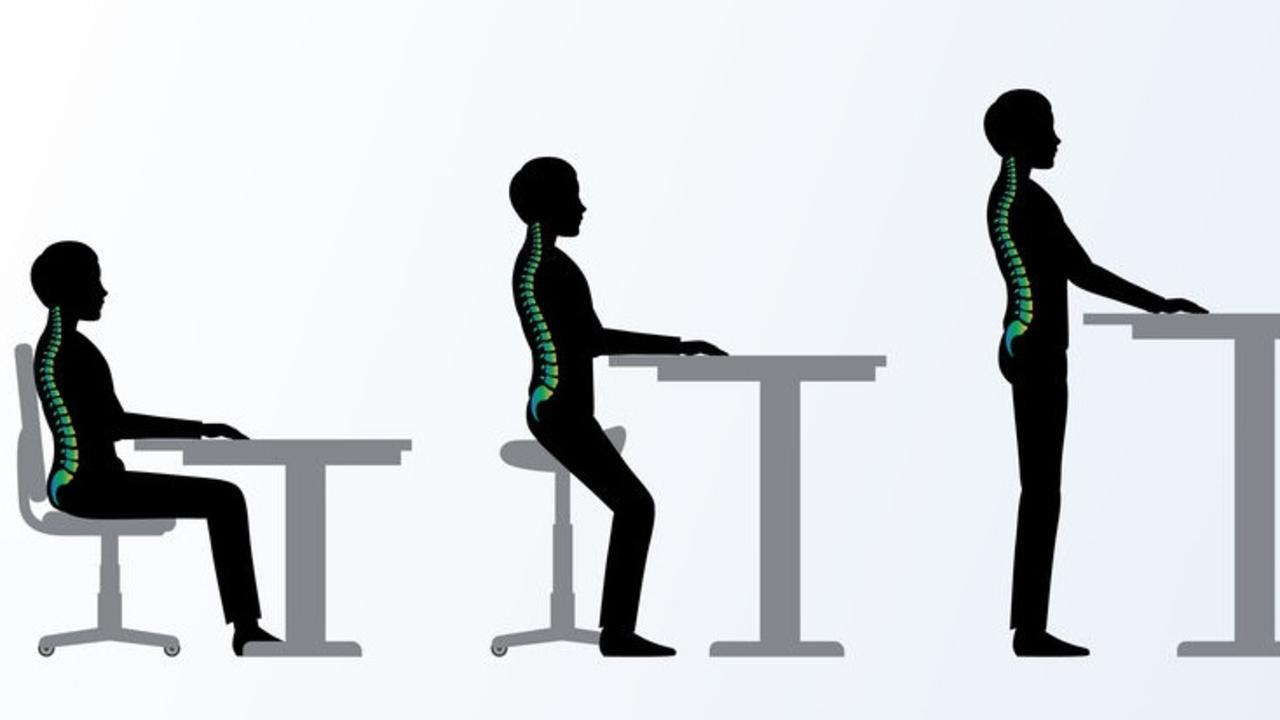Standing Desks: Where Does The Research Stand?

A few generations back, most workers did not worry about the job hazards of developing eye strain, slouched shoulders or dead butt syndrome (it’s a “thing”*). They didn’t worry about tracking their daily steps because most jobs required moderate activity. Today, with more than 26 million Americans working in occupations that involve long periods of sitting, it’s not a surprise that standing desks, one of the fastest growing corporate wellness trends, have become a simple solution for occupational sitting. (1) Do standing desks work? Just how effective is this $400/employee investment?
[Can a Standing Desk Help with Weight Loss?]
The Research.
A recent review of 46 studies found that employees who stood at their desks for 6 hours burned an extra 54 calories each day (2). In other words, if you can stand for 6 hours a day without increasing your calories, you can lose 5 pounds in a year. Additional evidence suggests standing desks may help with posture-related low back pain and may improve mood and energy.
Our 2 cents:
While many may question the likelihood of most employees being able to stand more than 6 hours a day, we applaud all small behavioral changes towards health. Small changes can yield big results. Just as creeping weight gain adds up over the years, so can gradual weight loss. FYI—if standing 6 hours a day isn’t your thing, other ways to burn those 54 calories—take an 8-minute walk or eat half your apple!
[Can a Standing Desk Increase Productivity?]
The Research.
There is no consensus on the connection between standing desks and productivity. More research is clearly needed as some reports say they increase productivity; some say they don’t; and some report mixed results. Regarding absenteeism, standing desks did not show a significant effect on reducing sick days (3).
Our 2 cents:
Despite the uncertainty of current research, standing desks are worth considering for a different, but related reason. Perhaps a better well-being metric is employee morale. Standing desks give employees the option to stand, even for short bursts of time—an option that might just provide an energy boost when that 3 pm wall hits. They can provide a musculoskeletal break from sitting—a break that could relieve that aching low back or neck pain. Proponents of standing desks see them as an employee retention tool and an attraction for millennial employees. And they send a wellness message from the top.
[Final Thought]
Standing desks may not be the magic solution to counter all of the health risks associated with a sedentary work-lifestyle. However, they might make your workers happier, ease the pain of prolonged sitting and they might even prevent dead butt syndrome! (Dead Butt Syndrome, also called gluteal amnesia, occurs when your gluteus medius gets inflamed and forgets to function normally. Can lead to hip, back and ankle pain.)
Sources:
- Church, T. S. et al. Trends over 5 decades in U.S. occupation-related physical activity and their associations with obesity. Journal PLoS One(2011).
- Saeidifard, F. et al. Differences of energy expenditure while sitting versus standing: a systematic review and meta-analysis. European Journal of Preventative Cardiology (2018).
- Shresth, N. Workplace interventions for reducing time spent sitting at work.Cochrane (2018)

